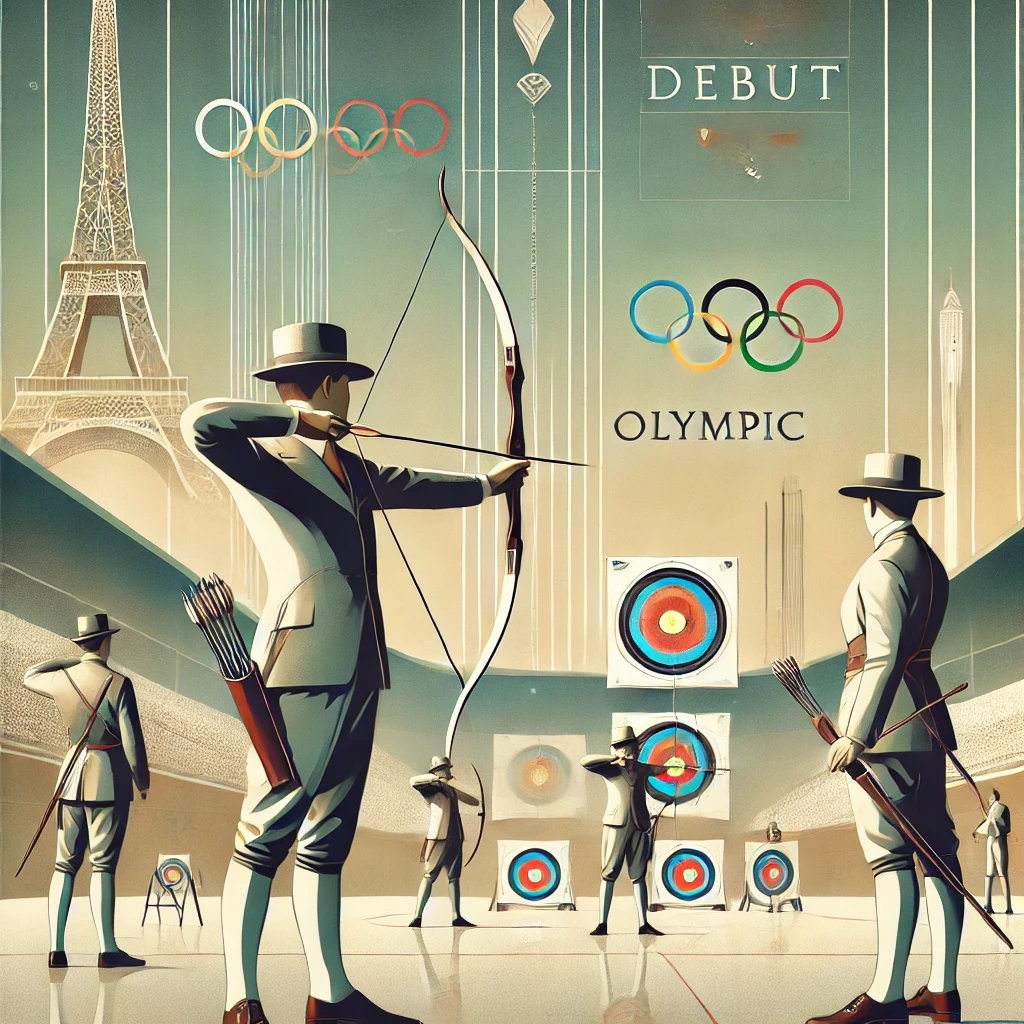Archery made its Olympic debut at the 1900 Summer Olympics in Paris, France, marking its entry as one of the earliest modern Olympic sports. Over the decades, the sport’s Olympic journey has been one of evolution, characterized by a long hiatus, transformative innovations, and a surge in global popularity.
The 1900 Olympic Debut
When archery first graced the Olympic stage in 1900, it stood apart as a sport without a universal standard for competition. This inaugural appearance reflected the local traditions of the host nation, France. Six events were contested, with participants shooting at various distances and targets, creating a diverse but inconsistent format.
Interestingly, only men competed in these initial events, a common feature of many early Olympic sports. Archery also featured in subsequent Games in 1904 (St. Louis), 1908 (London), and 1920 (Antwerp), but the lack of standardized rules resulted in irregular participation and formats.
Challenges and Hiatus
The absence of universal rules posed a significant challenge for archery’s Olympic future. By 1920, this lack of consistency led to its removal from the Olympic program. However, this period of hiatus was not the end of the story. Archery’s global evolution continued, spurred by the efforts of organizations striving to standardize rules and foster international participation.
The 1972 Reintroduction
After a 52-year absence, archery made a triumphant return at the 1972 Munich Olympics. This revival was made possible by the establishment of the Fédération Internationale de Tir à l’Arc (FITA), now known as the World Archery Federation. Under their guidance, a standardized target archery format was adopted, ensuring consistency and fairness across the competition.
For the first time, both men’s and women’s individual events were included, setting a precedent for gender parity in Olympic sports. The competition format, based on a target archery round, brought a newfound structure to the Games.
Evolution of Olympic Archery
1972–1988: The Early Modern Era
During this period, the competition format revolved around a double FITA round, where archers shot at four distances, with cumulative scoring determining the winners. These Games featured only individual events, emphasizing personal skill and consistency.
1988 Seoul Olympics: Team Events Introduced
The inclusion of team events in 1988 added a new layer of strategy and camaraderie to Olympic archery. This innovation shifted part of the focus from individual excellence to collective performance.
1992 Barcelona Olympics: A Spectator’s Delight
The 1992 Games introduced the head-to-head elimination format, where archers faced off in direct competition. This dynamic change made matches more thrilling for audiences, enhancing the sport’s appeal.
Present-Day Format
Today, Olympic archery begins with a ranking round, where each archer shoots 72 arrows to determine their seeding. The elimination rounds follow a set-system format, making each match unpredictable and engaging. This approach balances precision and strategy, captivating both competitors and spectators.
Notable Olympic Archery Moments
- Neroli Fairhall (1984): Representing New Zealand, Fairhall became the first paraplegic athlete to compete in the Olympics, showcasing the inclusive spirit of the Games.
- South Korea’s Dominance: Since its reintroduction in 1972, South Korea has emerged as the powerhouse of Olympic archery, particularly excelling in the women’s team events. Their dominance stems from a combination of rigorous training and a deep cultural connection to the sport.
- Athlete Icons: Legends like Kim Soo-Nyung of South Korea and Hubert Van Innis of Belgium have left indelible marks on Olympic history, with their multiple victories symbolizing archery’s competitive excellence.
Archery in the Olympics Today
In its current form, Olympic archery comprises four medal events: Men’s Individual, Women’s Individual, Men’s Team, and Women’s Team. Competitors shoot from a distance of 70 meters at a target 122 cm in diameter, aiming for the elusive 10-point gold circle at the center. The sport’s unique blend of precision, focus, and mental resilience continues to captivate global audiences.
A Legacy of Excellence
The inclusion of archery in the Olympics has elevated the sport to new heights, celebrating its rich history and fostering a global community of enthusiasts. From its localized beginnings in 1900 to the sophisticated, thrilling competitions of today, Olympic archery remains a testament to human skill, ingenuity, and perseverance.






0 Comments